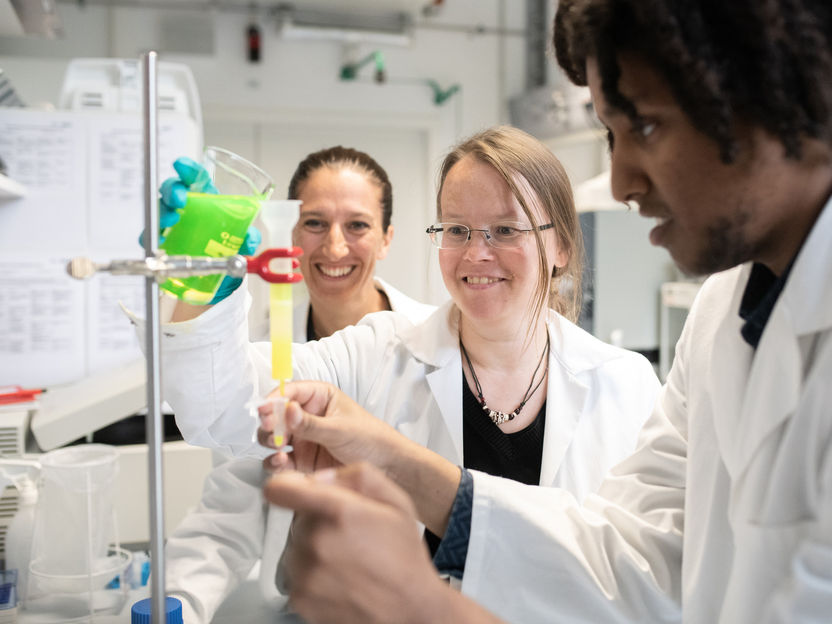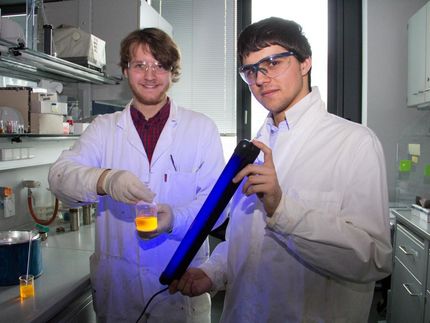NIST calculations may improve temperature measures for microfluidics
If you wanted to know if your child had a fever or be certain that the roast in the oven was thoroughly cooked, you would, of course, use a thermometer that you trusted to give accurate readings at any temperature within its range. However, it isn't that simple for researchers who need to measure temperatures in microfluidic systems - tiny, channel-lined devices used in medical diagnostics, DNA forensics and "lab-on-a-chip" chemical analyzers - as their current "thermometer" can only be precisely calibrated for one reference temperature. Now, researchers at the National Institute of Standards and Technology (NIST) have proposed a mathematical solution that enables researchers to calibrate the "thermometer" for microfluidic systems so that all temperatures are covered.
Reactions taking place in microfluidic systems often require heating, meaning that users must accurately monitor temperature changes in fluid volumes ranging from a few microliters (a droplet approximately 1 millimeter in diameter) to sub-nanoliters (a droplet approximately 1/10 of millimeter in diameter). A common DNA analysis technique, for example, depends heavily on precise temperature cycling. Ordinary thermometers or other temperature probes are useless at such tiny dimensions, so some groups have turned to temperature-sensitive fluorescent dyes, particularly rhodamine B. The intensity of the dye's fluorescence decreases with increasing temperature. The idea is that the dye can be used as a noninvasive way to map the range of temperatures occurring within a microfluidic system during heating and, in turn, provide a means of calibrating that system for experiments.
However, the technique currently requires the user to base all readings on the fluorescence at a single reference temperature. Previous groups have developed "calibration curves" that relate temperature to rhodmaine B fluorescent intensity based on a reference temperature of about 23 degrees Celsius (a technique first proposed by NIST researchers David Ross, Michael Gaitan and Laurie Locascio in 2001). But it turns out that the curves are only good for that one temperature. In an upcoming paper in Analytical Chemistry, the NIST team - Jayna J. Shah, Michael Gaitan and Jon Geist - reports that changing the reference point, such as the higher temperature when a microfluidic system is first heated, introduces errors when a dye intensity-to-temperature calculation is done using current methods.
"Our analysis shows that a simple linear correction for a 40 degrees Celsius reference temperature identified errors between minus 3 to 8 degrees Celsius for three previously published sets of calibration equations derived at approximately 23 degrees Celsius," says lead researcher Shah.
To address the problem, the NIST team developed mathematical methods to correct for the shift experienced when the reference temperature changes. This allowed the researchers to create generalized calibration equations that can be applied to any reference temperature.
Microfluidic DNA amplification (production of numerous copies of DNA from a tiny sample) by the polymerase chain reaction (PCR) is one procedure that could benefit from the new NIST calculations, Shah says. "PCR requires a microfluidic device to be cycled through temperatures at three different zones starting around 65 degrees Celsius, so a useful dye intensity-to-temperature ratio would have to be based on that temperature and not a reference point of 23 degrees Celsius," she explains.
Original publications: D. Ross, M. Gaitan and L.E. Locascio; "Temperature measurement in microfluidic systems using a temperature-dependent fluorescent dye"; Analytical Chemistry, Vol. 73, No. 17, pages 4117-4123, Sept. 1, 2001
J.J. Shah, M. Gaitan and J. Geist; "Generalized temperature measurement equations for rhodamine B dye solution and its application to microfluidics"; Analytical Chemistry, Vol. 81, No. 19, Oct. 1, 2009 (published online Sept. 1, 2009)
Most read news
Topics
Organizations
Other news from the department science

Get the life science industry in your inbox
By submitting this form you agree that LUMITOS AG will send you the newsletter(s) selected above by email. Your data will not be passed on to third parties. Your data will be stored and processed in accordance with our data protection regulations. LUMITOS may contact you by email for the purpose of advertising or market and opinion surveys. You can revoke your consent at any time without giving reasons to LUMITOS AG, Ernst-Augustin-Str. 2, 12489 Berlin, Germany or by e-mail at revoke@lumitos.com with effect for the future. In addition, each email contains a link to unsubscribe from the corresponding newsletter.
Most read news
More news from our other portals
Last viewed contents
Discrete_nanoscale_transport
Intertek Acquires Divisions of Ciba Expert Services from BASF - Expands Services Globally
Helix BioPharma Corp. Completes Enrollment in Its Phase II Trial of Topical Interferon Alpha-2b
List_of_surgeons






















































